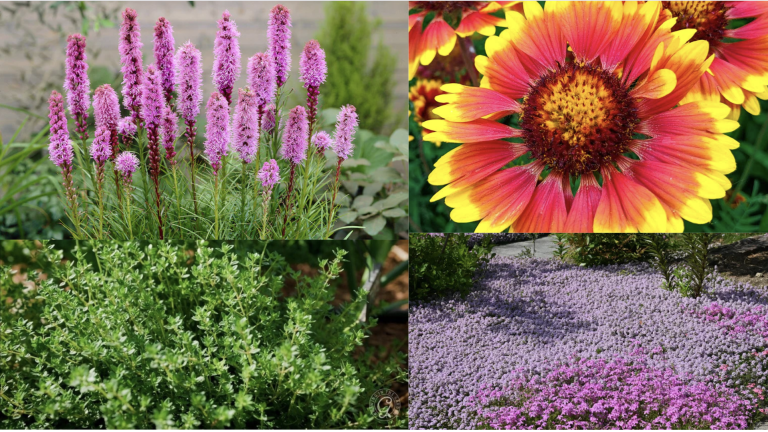Liatris is a beautiful flower with tall, spiky blooms that come in purple, pink, or white.
It’s a strong plant that grows well in many gardens and is loved by bees and butterflies.
Companion planting involves selecting other plants that complement your Liatris.
Some plants help each other grow better by sharing the same sunlight, soil, and water needs.
The right companions make your garden look nicer and healthier. In this blog, I’ll share some of the best companion plants for Liatris.
You’ll learn about colorful flowers, low-growing plants, and even edible companions that can go well with Liatris.
I’ll also discuss key factors to consider when selecting the right plants, including sunlight requirements, plant height, and complementary colors.
What Is Liatris?
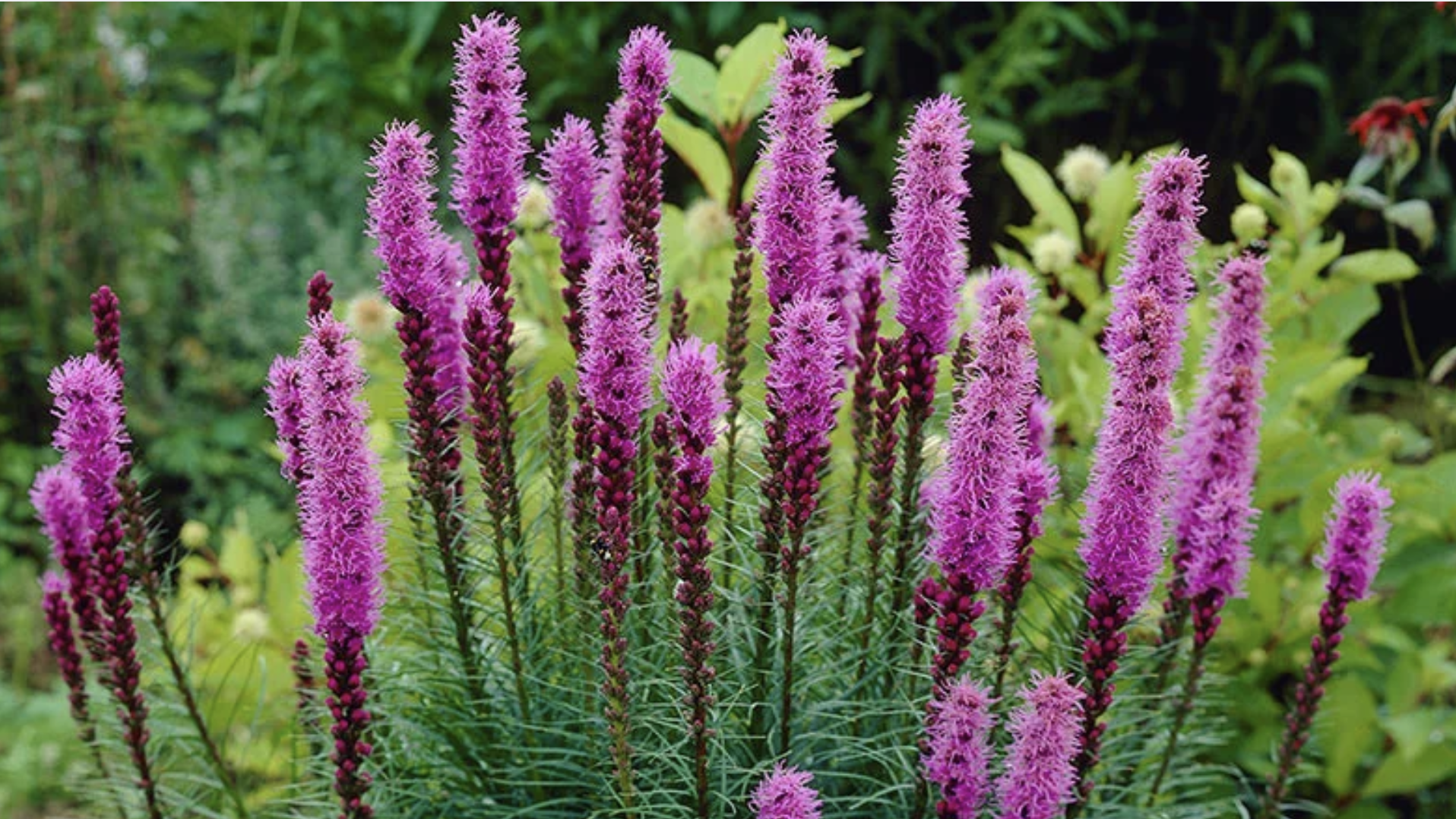
Liatris, also known as blazing star or gayfeather, is a type of flower that grows tall and has spiky blooms.
These flowers come in beautiful colors like purple, pink, and white.
Liatris is a tough plant that can grow in many different places, and it attracts bees and butterflies, which help pollinate other plants.
There are different kinds of Liatris, like Liatris spicata (dense blazing star) and Liatris ligulistylis (meadow blazing star).
They all need similar care. Liatris loves to be in full sun and needs soil that drains well so the roots don’t get too wet.
It also likes moderate watering and can survive even if the weather gets dry once it’s grown strong. Liatris is a beautiful and easy-to-care-for plant that can bring lots of color and life to your garden.
Why Companion Plants Matter for Liatris?
Companion planting helps Liatris grow better by providing support, improving soil health, and reducing pests. These are the further benefits of companion planting.
- Support: Companion plants can protect Liatris from strong winds and provide shade on hot days.
- Soil Health: Some companion plants add nutrients like nitrogen, making the soil better for Liatris to grow.
- Pollination: Many companions attract bees and butterflies, which help Liatris and other plants grow stronger.
- Pest Control: Certain plants release scents that keep pests away or attract helpful insects, reducing the need for pesticides.
- Better Growth: Companion plants help Liatris grow stronger by improving root health and providing extra nutrients.
- Prettier Garden: Pairing Liatris with other plants can make your garden look more beautiful by adding different colors and textures.
- Protection from Diseases: Some plants can protect Liatris from diseases by acting as a barrier or attracting insects that fight off disease.
Companion Plants for Liatris: Best Pairings for Your Garden
Create a beautiful, low-maintenance garden by pairing Liatris with the best companion plants for vibrant color and pollinator appeal.
1. Purple Coneflower (Echinacea purpurea)

Purple Coneflower is a perfect companion for Liatris, thanks to its vibrant purple-pink blooms that pair beautifully with the spiky flowers of Liatris.
Both plants thrive in full sun and well-drained soil, making them easy to care for together.
Purple Coneflower attracts pollinators like bees and butterflies, and its upright form provides a lovely backdrop to the bold spires of Liatris, creating an eye-catching contrast in the garden.
2. Black-eyed Susan (Rudbeckia hirta)

The bright yellow flowers of Black-eyed Susan create a striking contrast against the purple tones of Liatris, adding warmth and vibrancy to your garden.
Both plants tolerate dry soil and full sun, making them excellent companions in hot, sunny spots.
Black-eyed Susan’s daisy-like flowers bloom in mid-summer and continue to thrive, enhancing the overall appeal of your garden through the season.
3. Blanket Flower (Gaillardia)
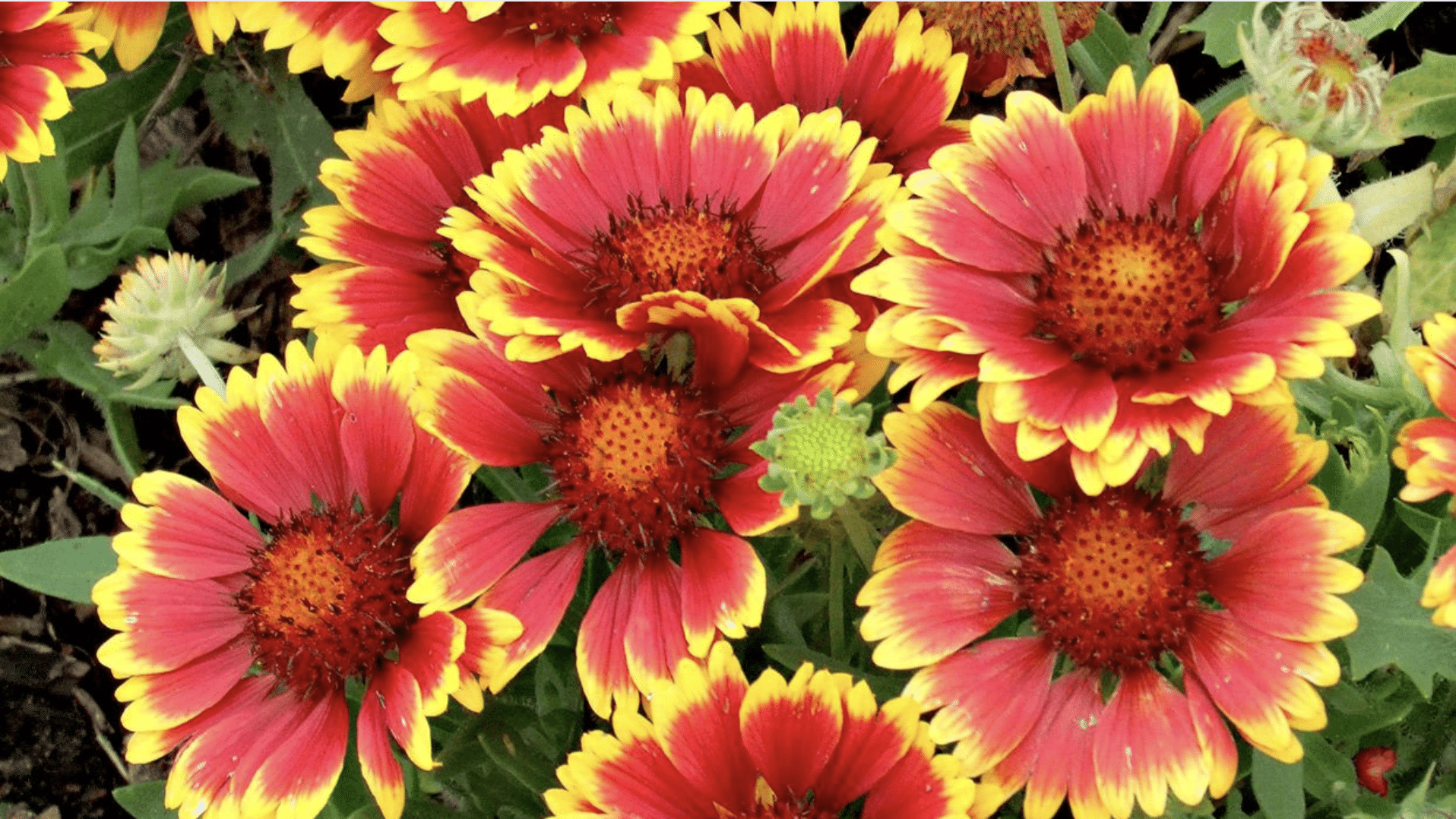
With its fiery red, orange, and yellow hues, Blanket Flower complements Liatris by adding a splash of color.
Both plants require little maintenance, as they thrive in well-drained soil and full sun.
Blanket Flower’s low-growing nature allows Liatris to stand tall and proud, while the contrasting colors create a stunning visual display in any garden.
4. Salvia (Salvia spp.)
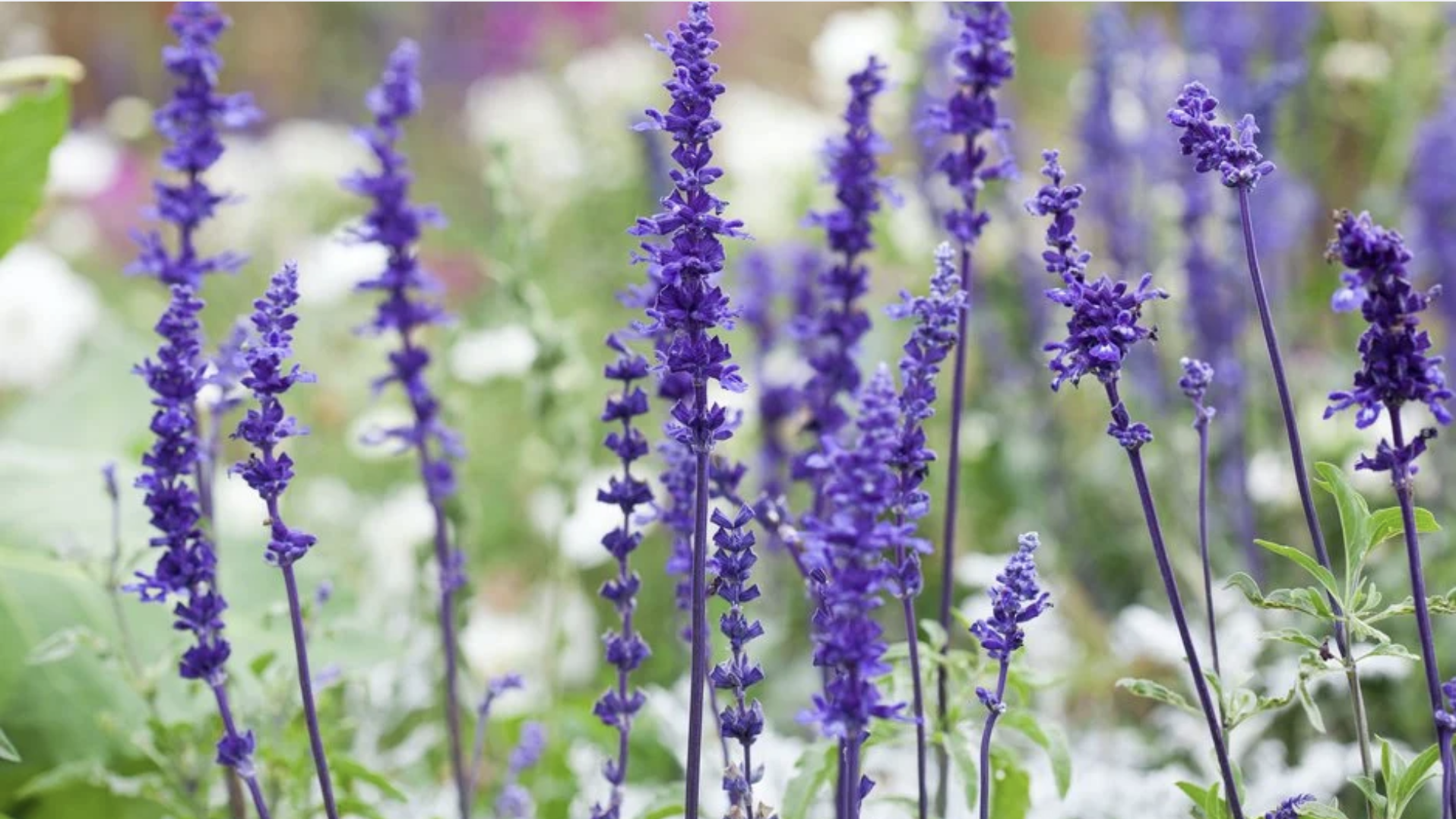
Salvia’s striking blue flowers create a perfect color palette with the purple spikes of Liatris, enhancing the garden’s overall appeal.
Both plants attract pollinators such as bees and hummingbirds, making them great choices for a wildlife-friendly garden.
Salvia’s upright growth and long-lasting blooms pair well with Liatris, creating a vibrant and harmonious look.
5. Coreopsis (Coreopsis verticillata)
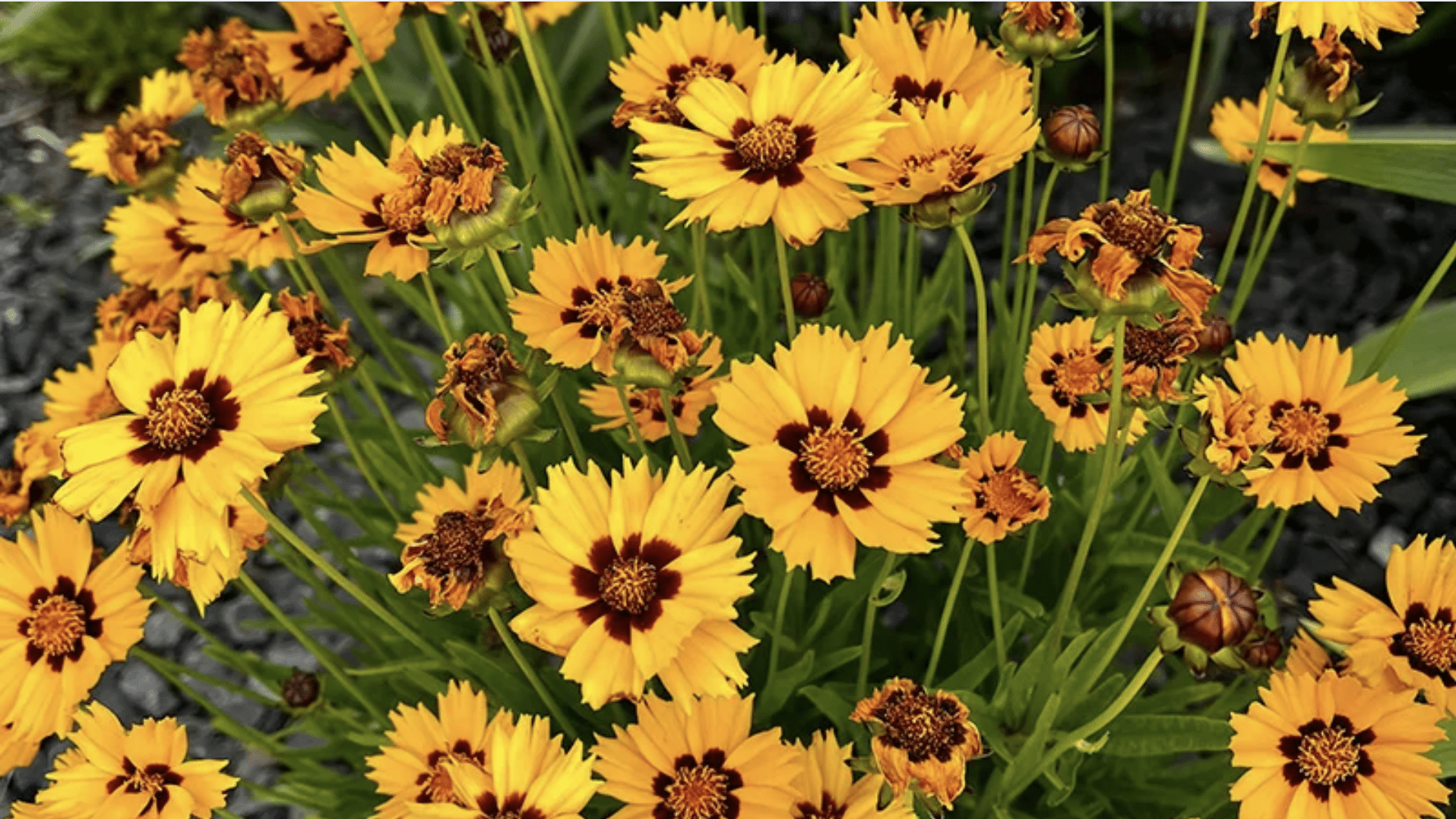
Coreopsis brings a burst of bright yellow color to contrast with the purple tones of Liatris, creating a lively and dynamic combination.
Both plants are drought-tolerant and easy to maintain, requiring minimal care once established.
Their sunny blooms will brighten your garden and provide visual interest throughout the growing season.
6. Bee Balm (Monarda didyma)
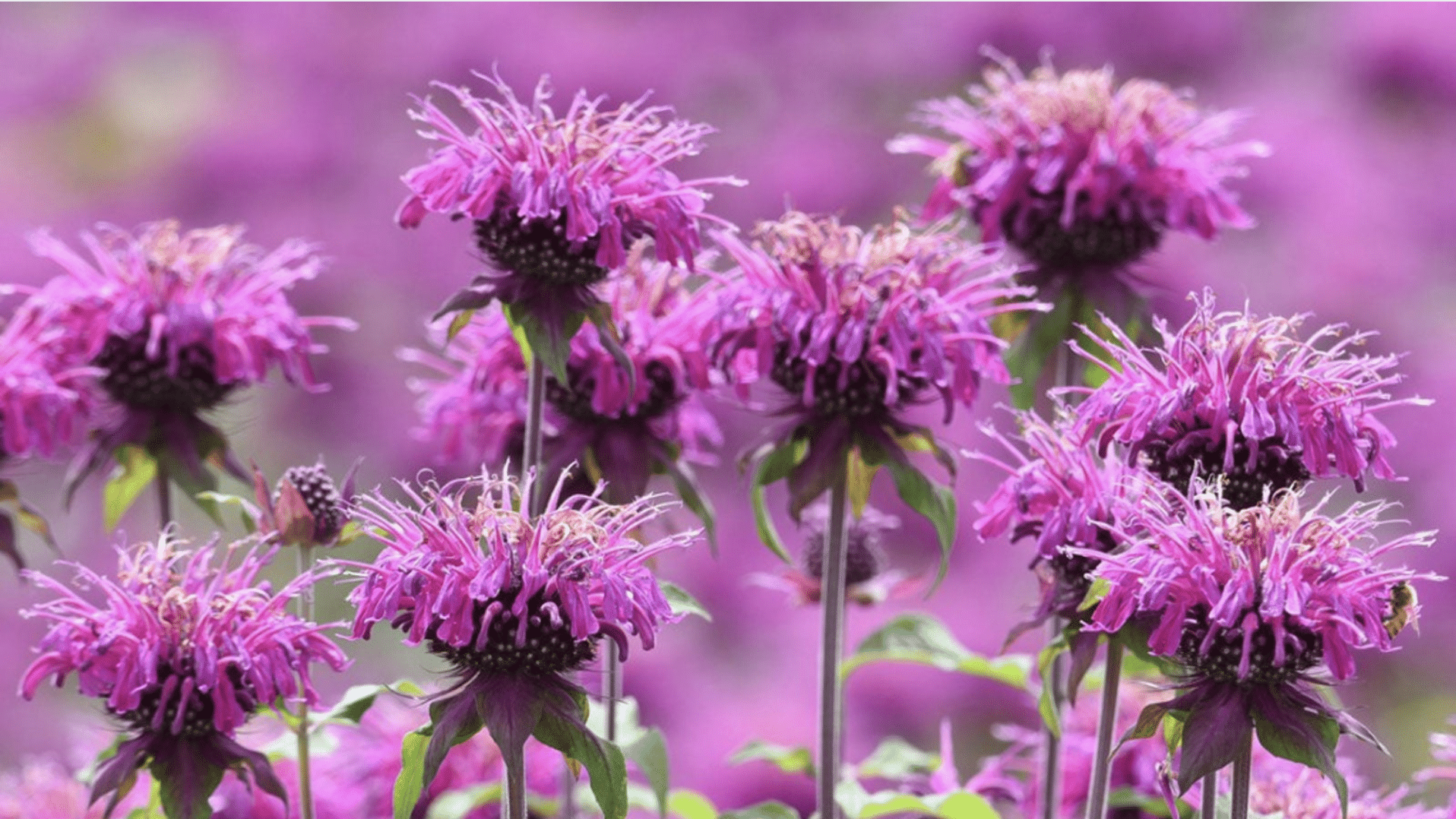
Bee Balm’s vibrant red and pink flowers are a bold addition to any garden, especially when paired with Liatris.
The rich colors of Bee Balm complement Liatris’ purple blooms, creating a striking contrast.
Bee Balm is also known for attracting hummingbirds and bees, making it a pollinator-friendly companion for Liatris.
7. Russian Sage (Perovskia atriplicifolia)

Russian Sage’s silvery-gray foliage and soft lavender blooms blend beautifully with the vibrant colors of Liatris.
This plant thrives in dry conditions, making it a great companion for Liatris.
It’s also deer-resistant, making it a great choice for gardens where wildlife is a concern.
8. Yarrow (Achillea millefolium)
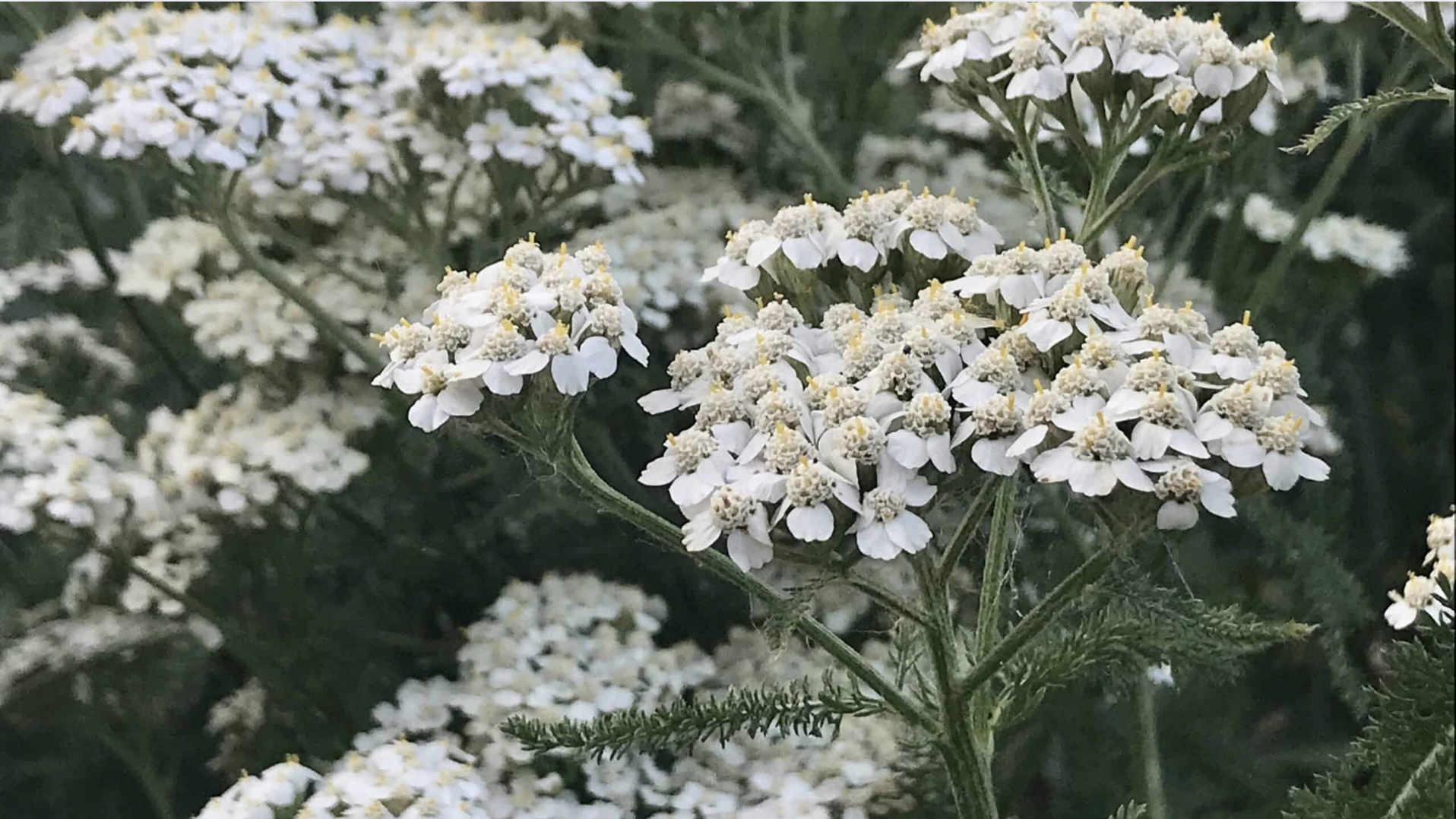
Yarrow’s flat-topped clusters of bright yellow, pink, or red flowers contrast nicely with the tall spires of Liatris.
Yarrow is known for its ability to thrive in poor soil and dry conditions, just like Liatris.
Both plants are easy to maintain and attract pollinators, making them a great pairing for a low-maintenance garden.
9. Gaura (Gaura lindheimeri)
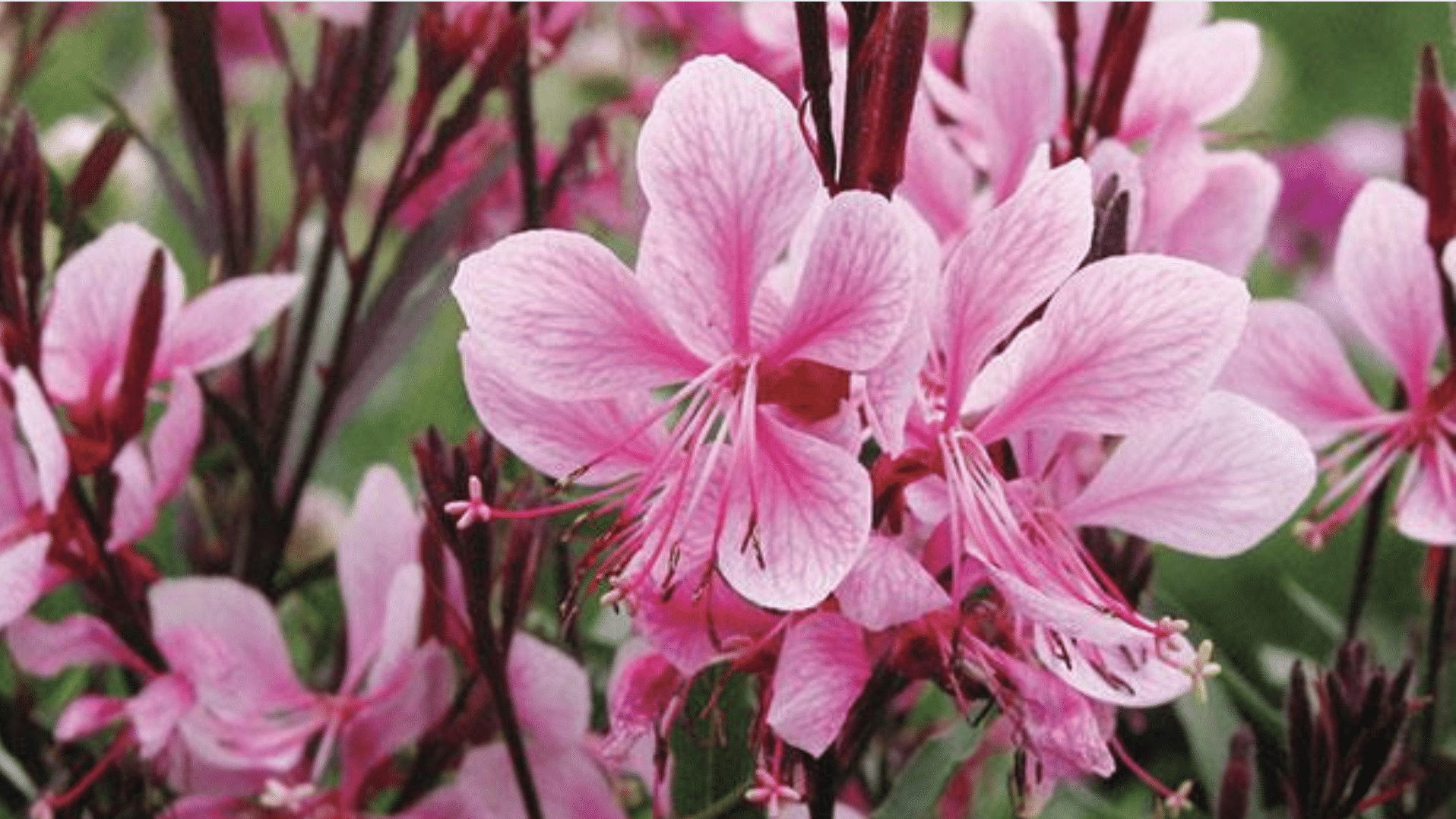
Gaura’s delicate, white or pink flowers create a soft, airy effect that complements the bold spires of Liatris.
The flowers sway gently in the breeze, adding movement and grace to your garden.
Gaura thrives in dry conditions, making it an excellent companion for Liatris in sunny, well-drained spots.
10. Daylilies (Hemerocallis)
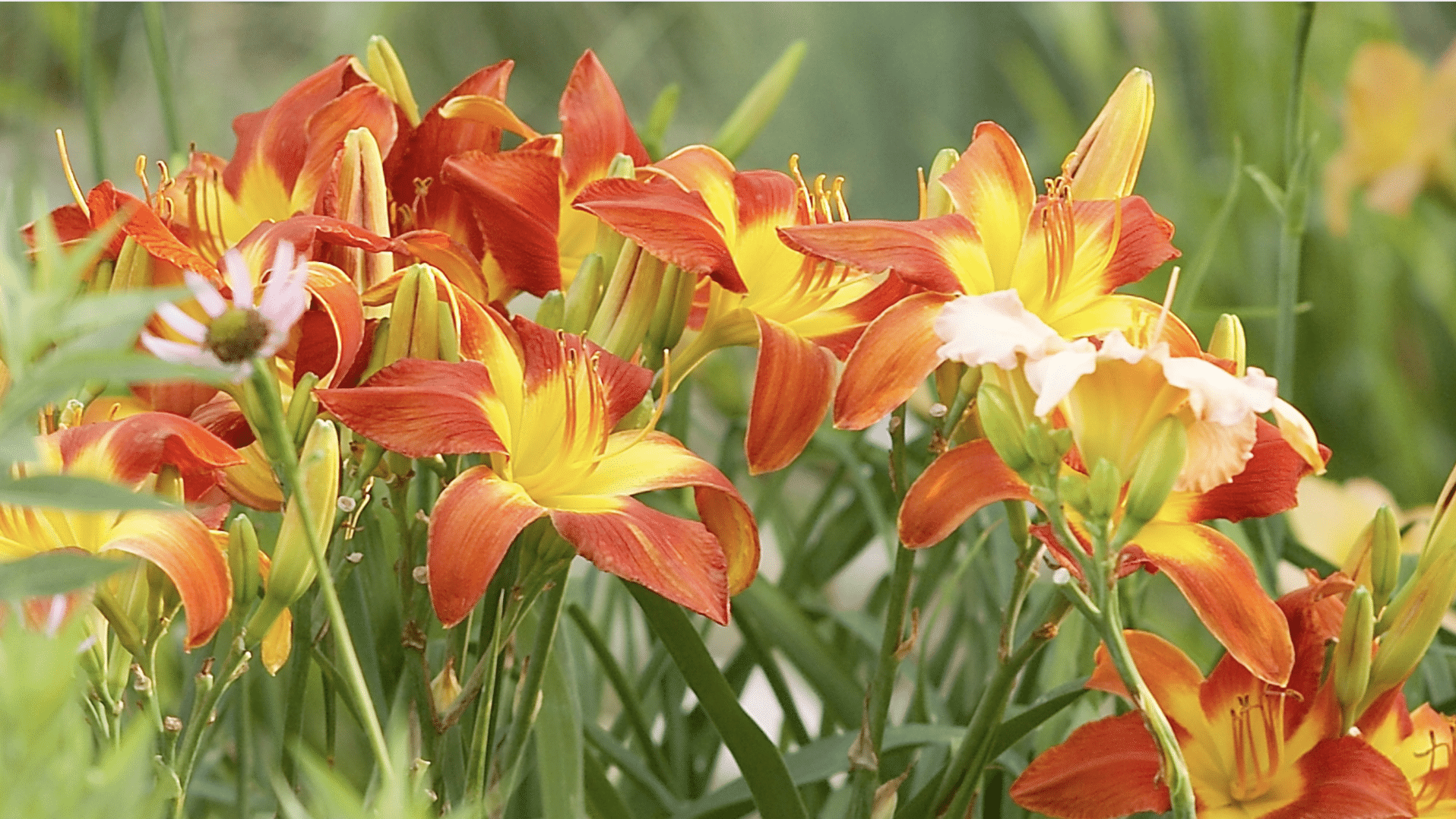
Daylilies bring a burst of color to your garden with their wide variety of hues, including yellow, orange, and red.
These flowers bloom at different times throughout the season, which helps extend the beauty of your garden.
Daylilies are easy to grow and pair well with Liatris, providing both height and color variety.
Low-Growing Ground Covers for Liatris
Pair Liatris with these low-growing ground covers to create a balanced garden with added color, texture, and easy maintenance.
11. Creeping Thyme (Thymus serpyllum)
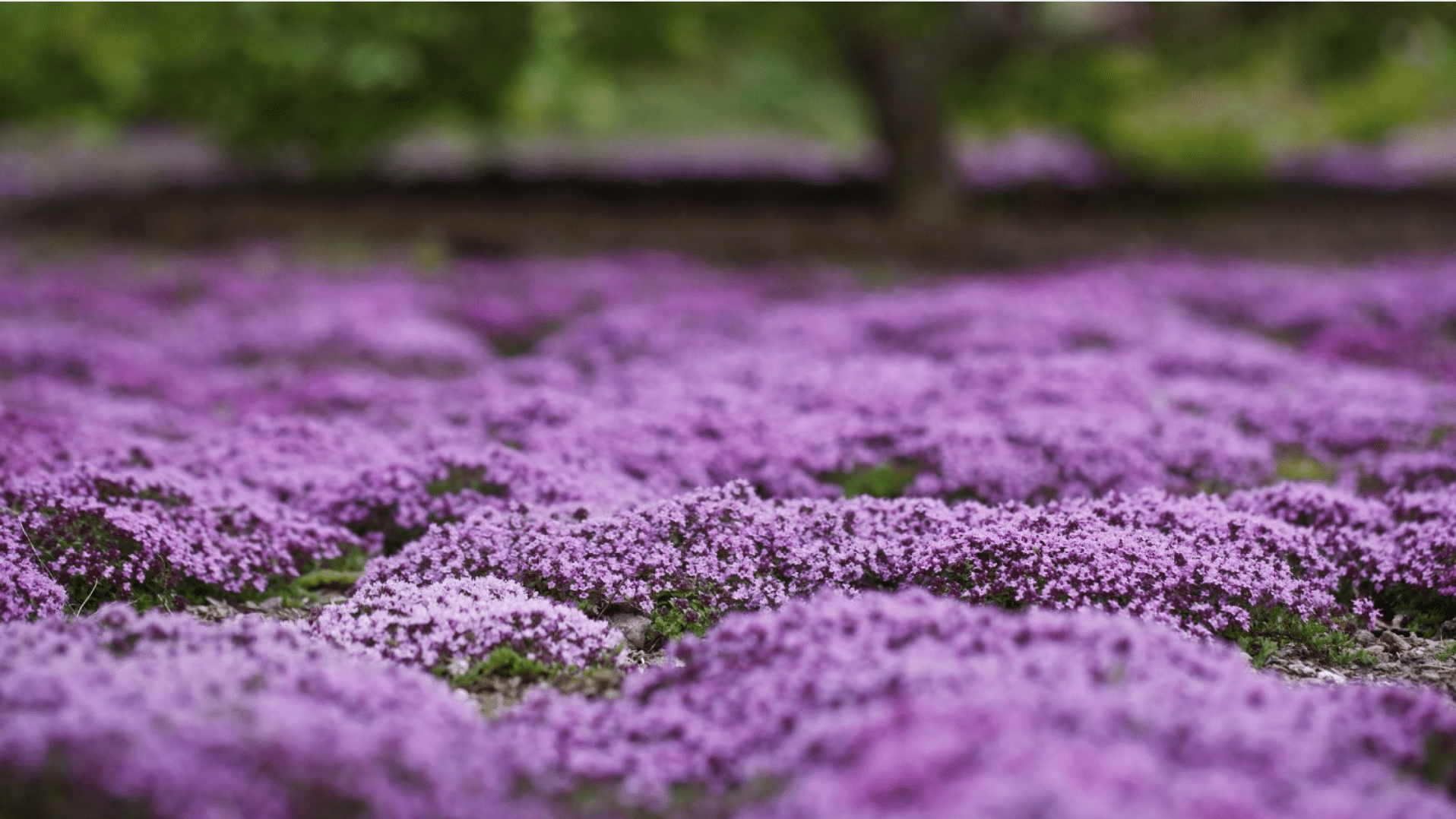
Creeping Thyme makes a wonderful ground cover around taller Liatris plants, offering a fragrant, low-growing option that doesn’t compete for space.
It thrives in dry soil and full sun, just like Liatris, and adds a beautiful green carpet to your garden.
Creeping Thyme also attracts pollinators and is a great addition to a pollinator-friendly garden.
12. Sweet Woodruff (Galium odoratum)
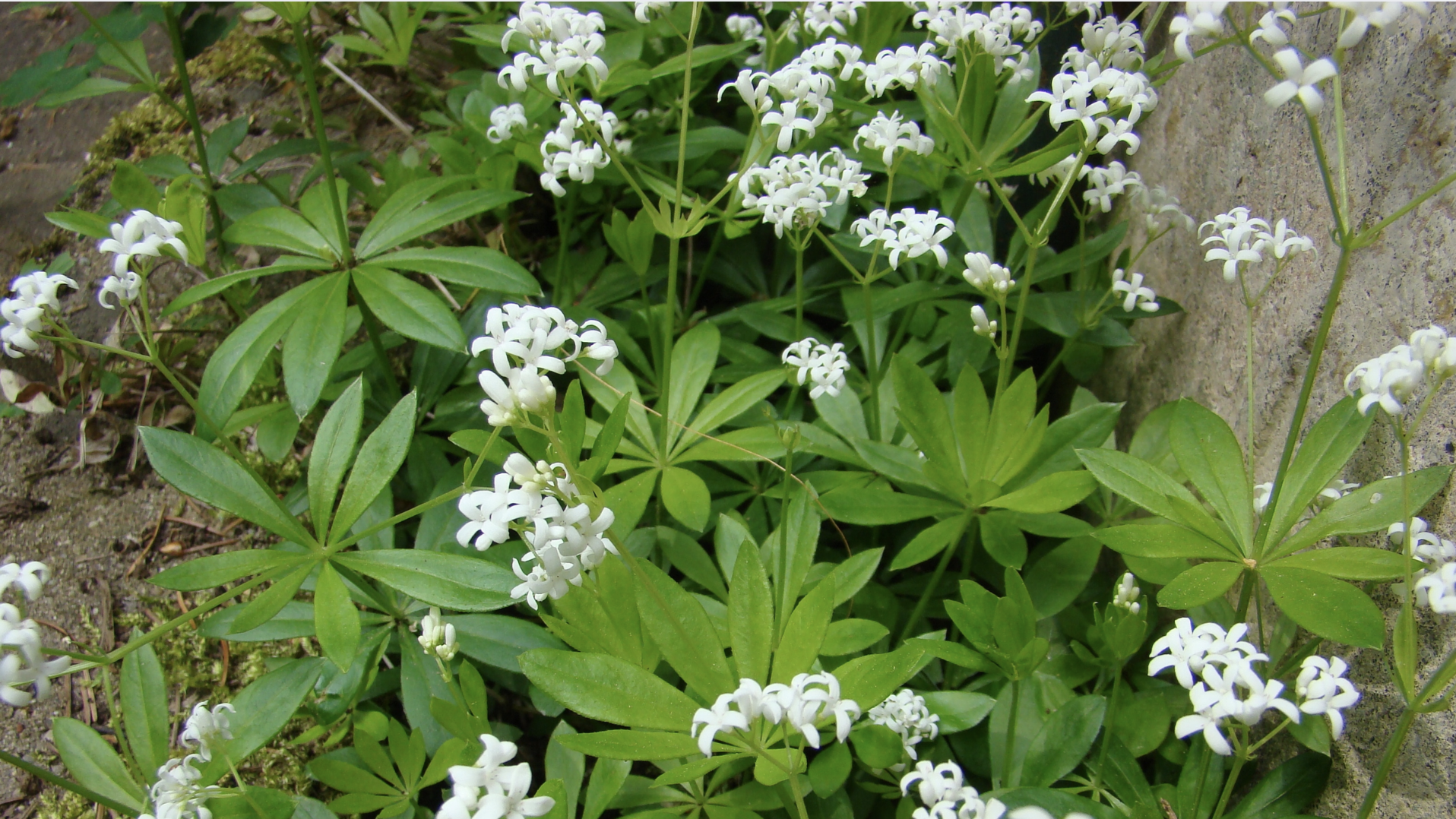
Sweet Woodruff’s carpet-like appearance and bright green foliage create a lovely contrast to the tall, spiky Liatris.
This ground cover is ideal for partially shaded areas, adding a touch of greenery beneath the taller plants.
It also has a mild, pleasant fragrance that enhances the atmosphere of your garden.
13. Ajuga (Ajuga reptans)
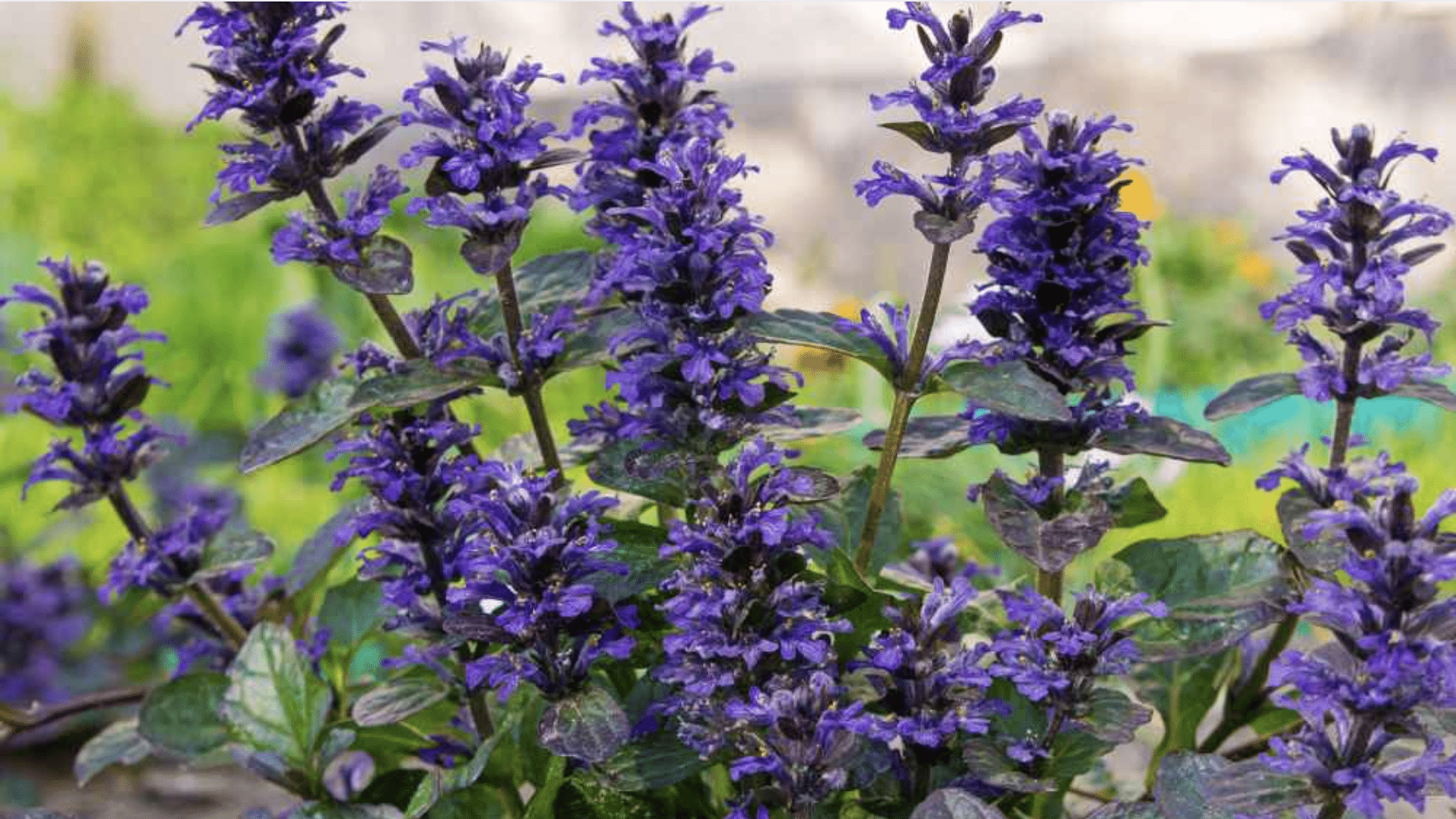
Ajuga’s blue to purple foliage works well with the tall, spiky form of Liatris.
This fast-growing ground cover spreads quickly and requires little care, making it an excellent choice for filling in spaces around Liatris.
Its bold foliage contrasts nicely with the vibrant blooms of Liatris, providing a rich backdrop for the flowers.
14. Sedum (Sedum spp.)
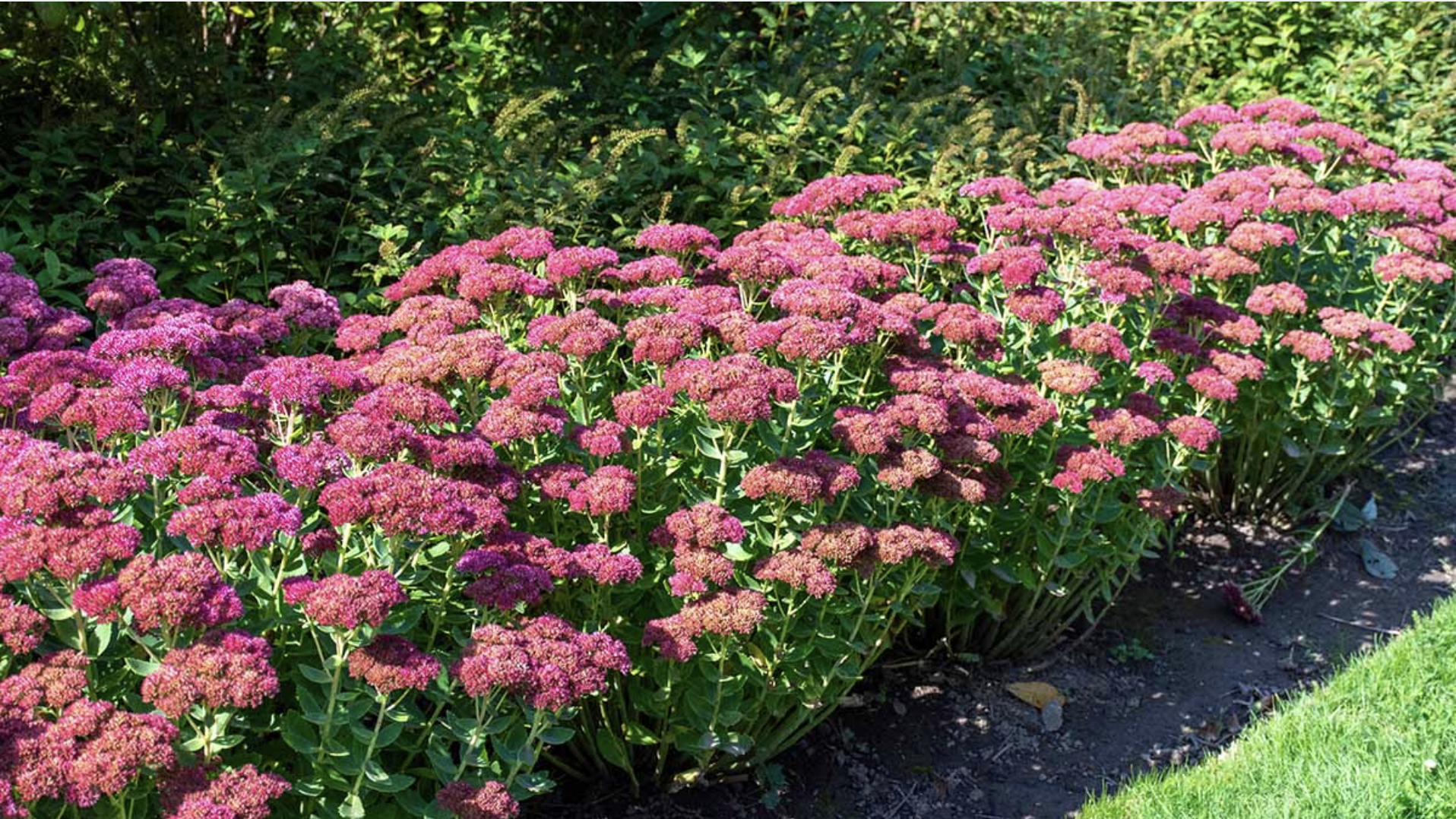
Sedum’s succulent leaves and late-blooming flowers make it an ideal companion for Liatris. It thrives in dry conditions and poor soil, just like Liatris.
The combination of Sedum’s fleshy foliage and Liatris’ tall spires creates a textural contrast that adds visual interest to your garden.
Sedum also attracts pollinators, making it a great choice for a wildlife-friendly garden.
Key Factors to Consider When Choosing Companion Plants
Consider these key factors when selecting the best companion plants for Liatris, ensuring they thrive together in your garden.
| Factor | What to Consider | Why It Matters |
|---|---|---|
| Sun Requirements | Choose plants that thrive in full sun, just like Liatris. | Ensures all plants grow strong in the same sunny conditions. |
| Soil Type | Pick plants that prefer well-drained soil and can handle dry spells. | Prevents root rot and supports healthy growth for both Liatris and its companions. |
| Plant Height | Use shorter or similarly tall plants to avoid overshadowing Liatris. | Keeps the garden visually balanced and lets Liatris stay visible and upright. |
| Color Contrast | Pair with contrasting or complementary colors (e.g., yellow, red, or white flowers). | Enhances the visual appeal and helps Liatris stand out in mixed plantings. |
Conclusion
Companion planting offers many benefits for Liatris, from enhancing its beauty to improving its growth and attracting beneficial pollinators.
By pairing Liatris with the right plants, you can create a more vibrant, colorful garden that thrives with minimal care.
If it’s the striking contrast of flowers or the complementary growth habits, companion plants like Purple Coneflower, Black-eyed Susan, and Yarrow can enhance the overall health and appearance of your garden.
I encourage you to experiment with different companion plants to see how they work together and bring new life to your garden.
Consider factors like color, height, and sunlight needs to find the perfect pairings.
Feel free to share your favorite Liatris companions or any gardening tips you’ve discovered in the comments below!


